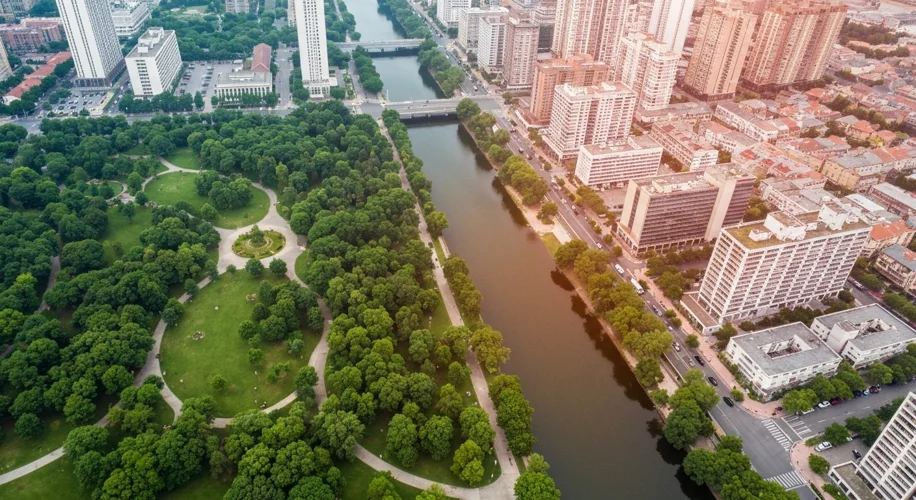Did you know that the very cities we call home can amplify the effects of climate change? It’s a tough reality, and it’s not felt equally by everyone. Today, I want to talk about the intersection of climate change and social justice, specifically how urban environments are creating a disproportionate burden on certain communities.
The Urban Heat Island Effect: More Than Just a Hot Day
Many cities experience what scientists call the “urban heat island” effect. This happens because concrete, asphalt, and buildings absorb and retain more heat than natural landscapes like forests and grass. Think about walking barefoot on a black asphalt road on a sunny day versus walking on a shaded park path – there’s a huge difference!
In cities, this means that temperatures can be several degrees hotter than in surrounding rural areas. This isn’t just an inconvenience; it has serious health implications, especially during heatwaves. According to the EPA, urban areas can be 1-7°F warmer than their rural surroundings, and this difference can be even greater at night.
Who Feels the Heat the Most?
Here’s where social justice comes in. We often see lower-income neighborhoods and communities of color concentrated in areas with less green space and more heat-absorbing surfaces. These are the communities that already face systemic disadvantages, and the urban heat island effect exacerbates existing vulnerabilities.
For example, a 2021 study published in Environmental Justice found that Black and Hispanic communities in Philadelphia experienced significantly higher land surface temperatures than white communities. This isn’t by accident; it’s often a legacy of historical housing policies and discriminatory practices that led to disinvestment in certain neighborhoods. These areas may also have fewer resources for air conditioning or access to cooling centers during extreme heat.
The consequences can be severe: increased rates of heat-related illnesses like heatstroke and exhaustion, worsening of chronic conditions like asthma and heart disease, and even higher mortality rates during heatwaves. It’s a clear example of how environmental factors are deeply intertwined with social equity.
Community-Led Solutions: Bringing the Cool
But it’s not all bad news. I’m incredibly inspired by the community-led solutions emerging across cities. People are actively working to bring cooler, healthier environments to their neighborhoods.
- Greening Initiatives: Many grassroots organizations are focused on increasing tree canopy and green spaces. Planting trees provides shade, cools the air through evapotranspiration, and can improve air quality. Initiatives like planting rain gardens also help manage stormwater and cool urban surfaces.
- Cool Pavements and Green Roofs: Some cities are experimenting with reflective materials for pavements and rooftops, which absorb less heat. Green roofs, covered with vegetation, offer insulation and cooling benefits.
- Community Gardens and Urban Farms: Beyond providing fresh food, these spaces introduce more greenery and help foster community resilience. They can also serve as much-needed cool refuges.
- Advocacy and Policy Change: Community groups are also pushing for better urban planning that prioritizes equitable access to green infrastructure and considers the heat island effect in development decisions.
It’s a complex challenge, but by understanding how climate change impacts our cities and by supporting the incredible work of communities on the ground, we can move towards more equitable and resilient urban futures. Let’s talk about how we can support these efforts in our own cities.

